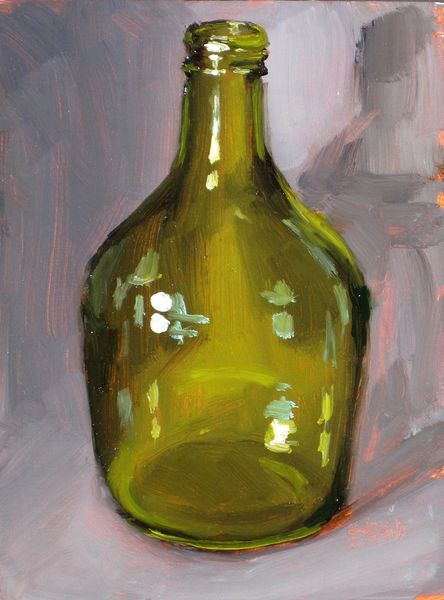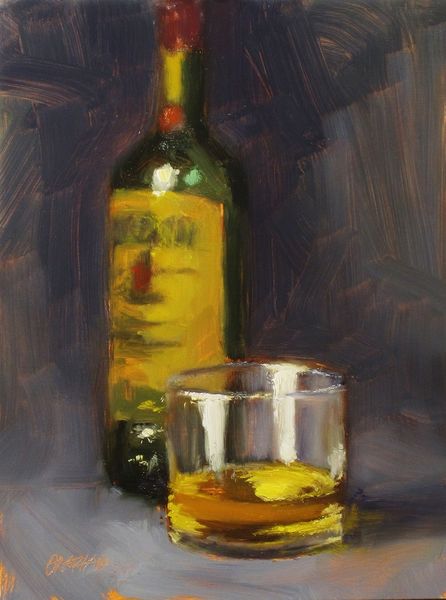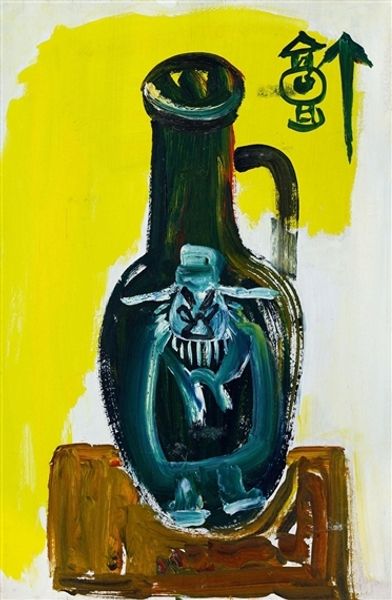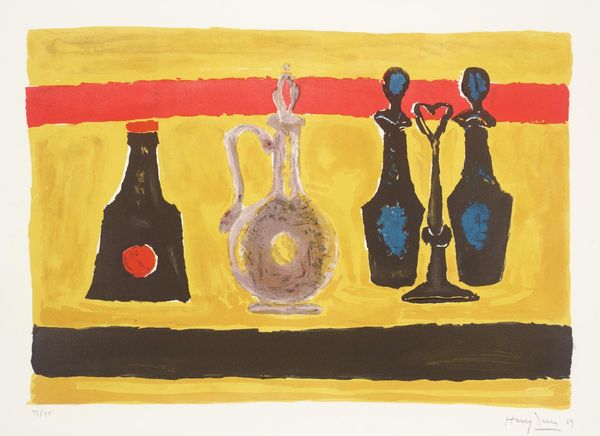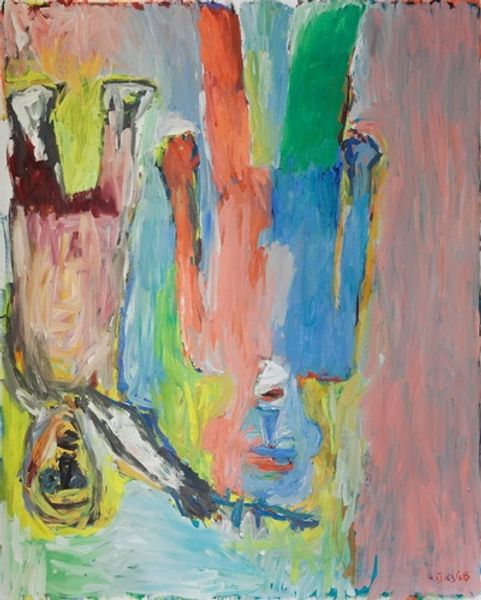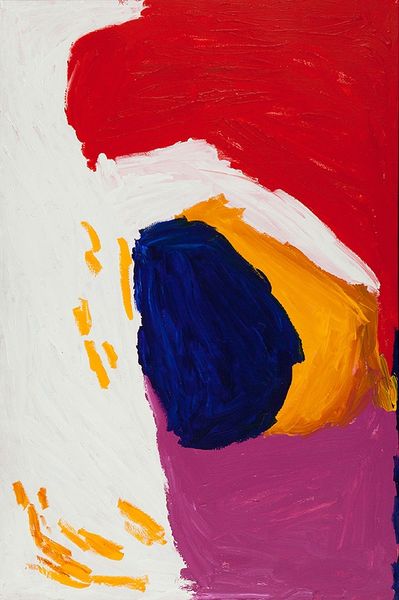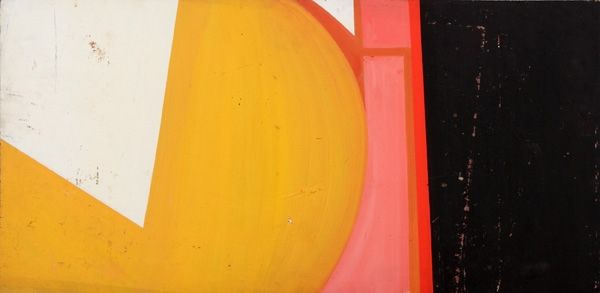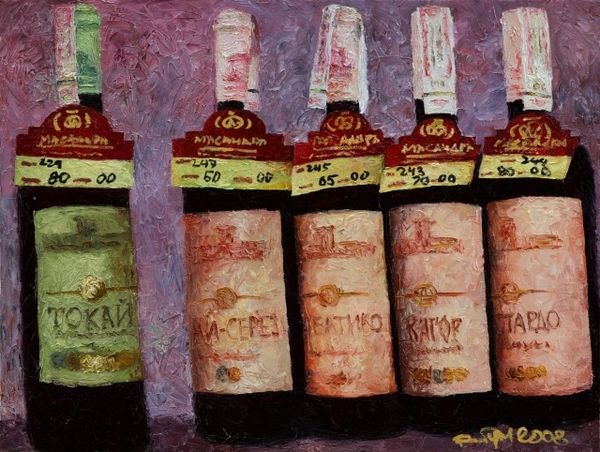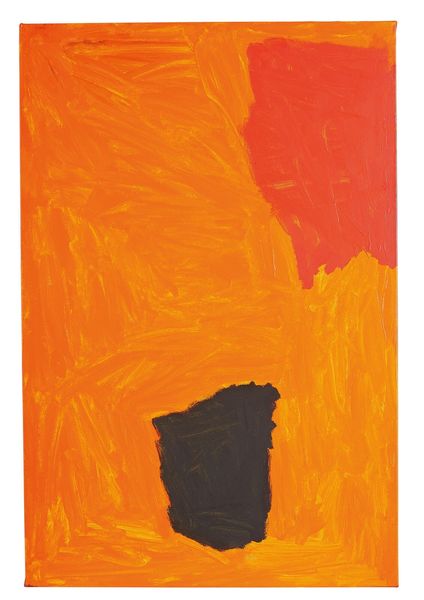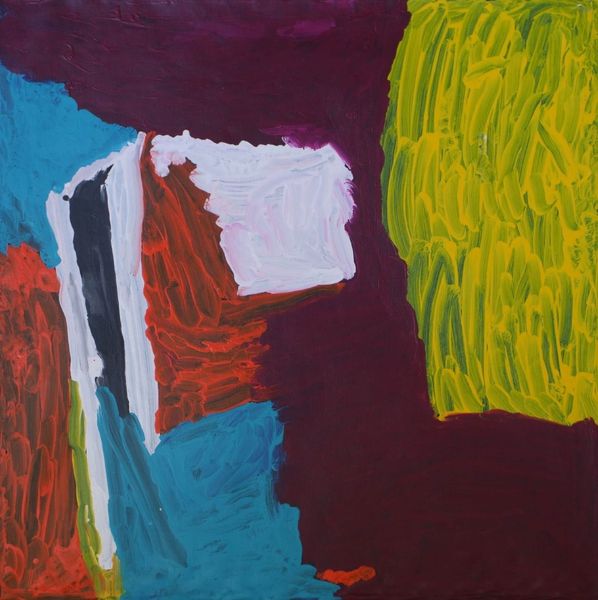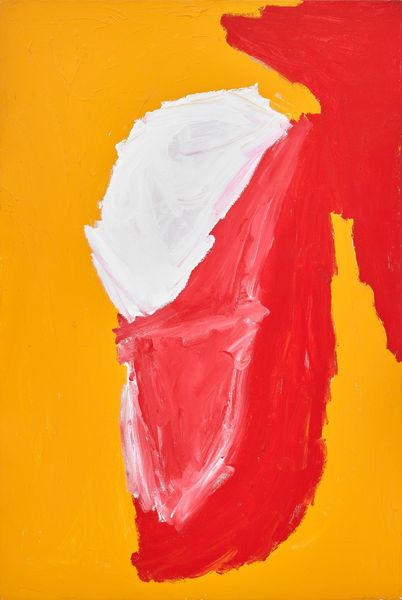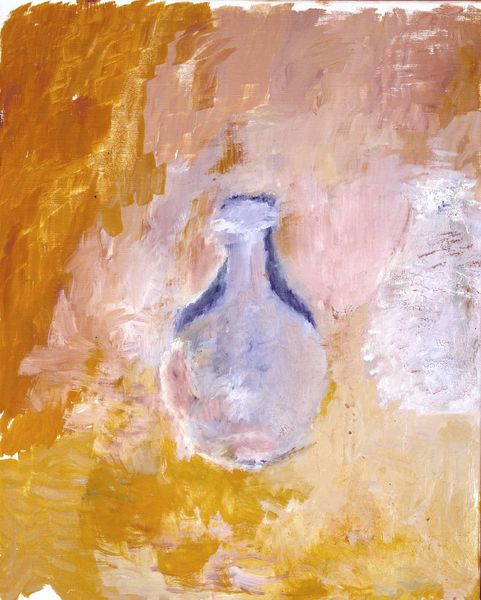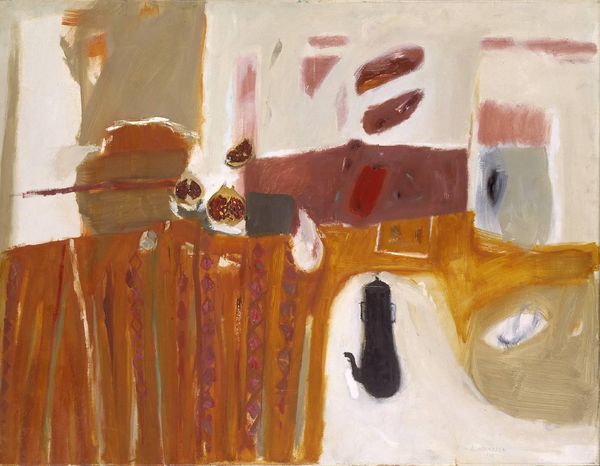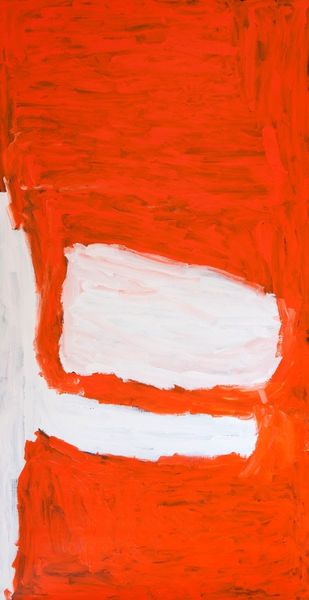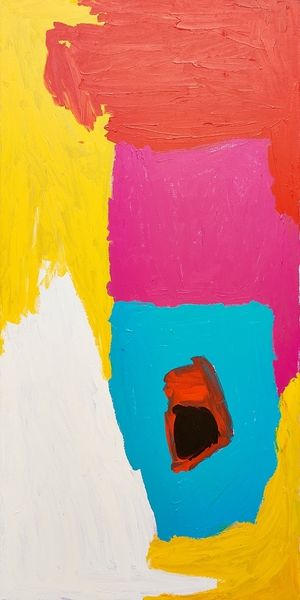
painting, oil-paint
#
contemporary
#
acrylic
#
painting
#
oil-paint
#
oil painting
#
realism
Copyright: Modern Artists: Artvee
Curator: Right now, we are looking at "A Tall Cold One," an oil painting by Dan Graziano. Editor: Immediately, I'm struck by the colors. That background lavender contrasting with the warm golden brown of the bottle...it evokes a feeling of casual warmth, almost like a nostalgic summer evening. Curator: Graziano’s piece fits squarely within contemporary realism. These still-life compositions became quite common after postmodernism with art exploring commercial objects removed from grand historical narratives, favoring relatable, everyday imagery. Editor: Interesting point. I see the symbolism going further: Beer, often associated with camaraderie, relaxation, even escape. It also makes me wonder about its context in social life as both casual recreation and a commodity of production. I'm wondering what historical associations come up when viewing it with all of those aspects. Curator: Precisely. The artist is inviting us to consider how we interact with commonplace objects—items made culturally salient within complex societal networks. Is he critiquing the commodification of leisure, or merely reflecting it? Perhaps a little of both, actually. Editor: I like that duality. The light illuminating certain parts of the glass hints at fragility but juxtaposes to ideas around mass commercial availability of it. Curator: Agreed. One way to explore the impact this type of representation had on viewers is how realism impacted institutional biases. Galleries showed new themes, influencing artistic dialogue. The art of beer bottle shifted away elitist conceptions about what art “should” display, reshaping our shared aesthetics and expanding accessibility. Editor: I like the work's openness to different readings. It gives viewers agency to reflect on familiar experiences and personal meanings of those familiar images, even those seemingly straightforward still life items. Curator: Yes, that interplay—between accessibility and layered cultural meaning is the source of its power in art historical terms. Editor: The piece reminds me not to take familiar items for granted and notice visual details for emotional context. Curator: Absolutely; art helps notice all these quiet ways, everyday shapes and objects reflect society, class and our own history.
Comments
No comments
Be the first to comment and join the conversation on the ultimate creative platform.
